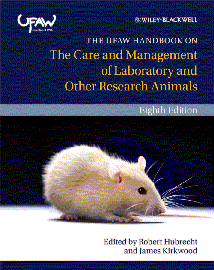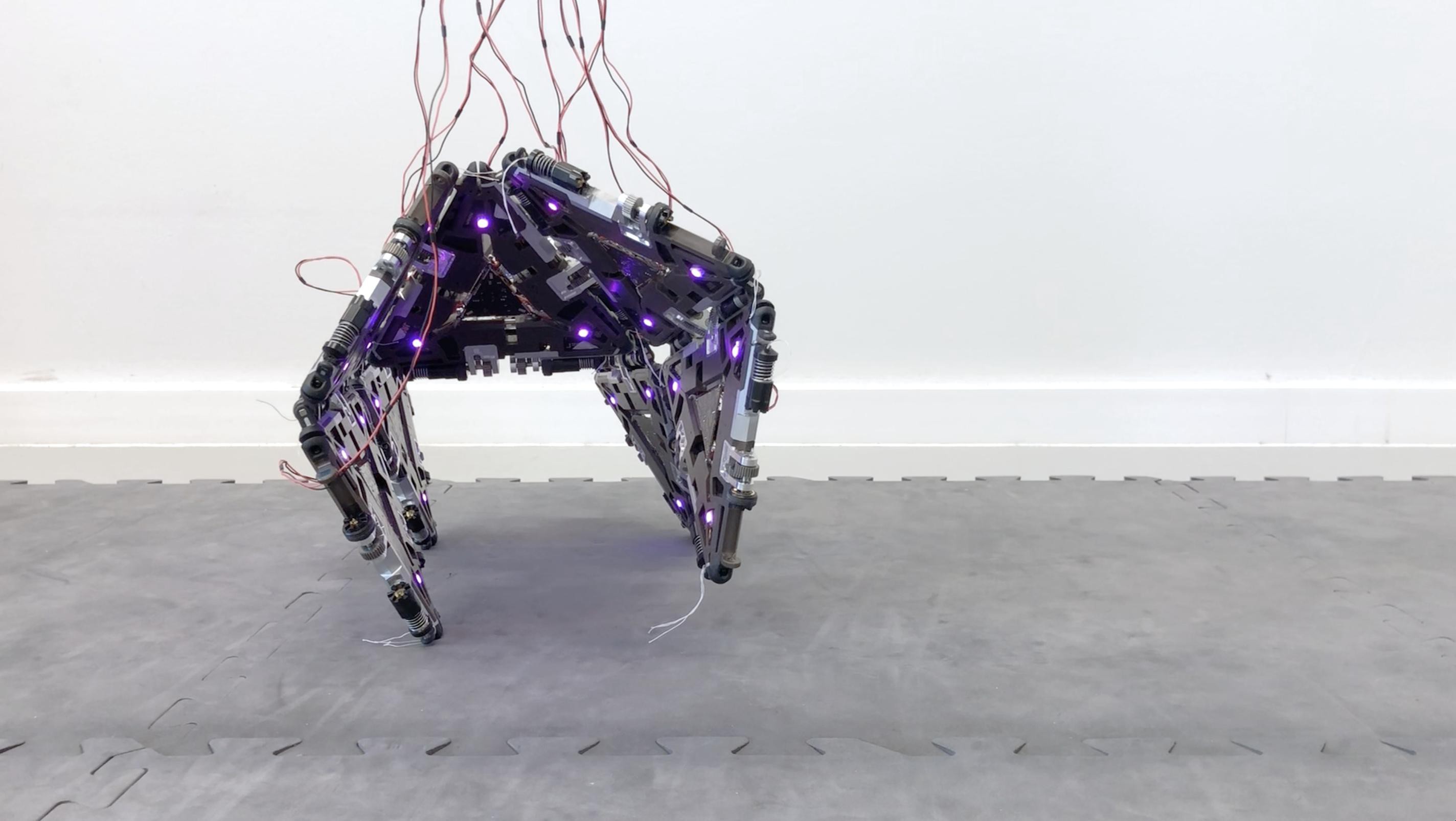
B.O. Hughes提出動物福利意即動物與身處環境之和諧,而D.M. Broom對動物福利奠下了科學上的定義:動物嘗試適應身處環境的狀態(有能力控制身心的安定,包括生理、心理、行為等等)。對動物的福利關注早於動物福利被科學定義前的1920年代已經出現,由倫敦大學動物福利協會(1938年更名為動物福利大學聯會(Universities Federation of Animal Welfare, UFAW))提出。該會提出「處理動物問題須以科學為基礎,用上最大同情心,但要將感傷收到最小」。
動物福利最先推行於實驗動物。1947年,該會出版實驗動物手冊(laboratory animal handbook),奠下了實驗動物的福利基準;並於1950年代提出動物實驗的3R原則:替代(Replacement)、減少(Reduction)及改善(Refinement)。這比後來同樣由該會制定的農業動物照護及管理福利基準的出現還要早二十年。儘管如此,實驗動物福利至今仍存在大量需要改善的空間,特別是過去人們多從生理層面去檢視動物福利,只顧消極地預防和處理病痛等問題,而忽略了心理福利需求(而心理問題也會對生理造成壞影響)。因此,過往的實驗動物福利改善多數只從改善居住環境的設計(如擴建和衛生等)著手,較少著眼於改善人類跟實驗動物的互動以減少實驗動物因人類而受的心理壓力。上個月筆者有機會參與澳紐實驗動物協會(Australian and New Zealand Laboratory Animal Association, ANZLAA)主辦的座談會,內容是講述運用行為訓練及條件制約(Conditioning)方法來改善動物設施內的福利,正好提供了改善實驗動物的心理福利的新方法。
動物的心理包括了認知、情緒以及由此而生的行為,而作為有知覺的生命體,動物或被動或主動地不斷從與身處的環境(外來刺激)中學習認知、情緒、行為。要改善動物的心理福利,就要先了解牠們的心理狀況,因此需要了解動物的學習原理和結果;而了解了動物的學習原理和結果後,則可以反其道而行,主動地應用這些原理去幫助動物適應環境。動物有多種學習方法,最不同動物共通、最主要的兩種分別為對情緒(及其延伸行為)作用的古典條件制約(Classical conditioning),以及對行為作用的操作式條件制約(Operant conditioning)。
古典條件制約由俄國科學家巴洛夫(I.P. Pavlov)所發現,著名例子莫過於巴洛夫那隻聽到鈴聲就流口水的狗。以巴洛夫的狗作例子,狗本來不需要學習,看見食物(非制約刺激)就會被引發食慾而流口水(非制約反應),而若狗每次看見食物時都聽到鈴聲,久而久之,鈴聲和食物就會在狗的認知中產生配對聯繫,使得鈴聲成為一個制約刺激,可以單獨地引發狗的食慾使其流口水(流口水成為對鈴聲的制約反應)。這過程讓狗學習了鈴聲對自己的意義和對鈴聲作出相應的情緒及行為反應。在實驗室之中,清潔機造成的噪音或人類強迫性的對待手法等等非制約刺激常常引起實驗動物的恐懼情緒,造成躲避、逃跑、反擊等非制約恐懼行為反應,通過古典條件制約過程,動物更學習對清潔機或人類本身(制約刺激)感到恐懼並做出相應行為(制約反應),這使得實驗動物經常地處於莫大而不必要的心理壓力。動物對人類的恐懼反應更往往引起人類加倍粗暴的對待,例如更迅速用力地抓住動物不讓其逃走或反擊,造成惡性循環,使動物心理壓力更加惡化,並大大提高動物和人類受傷的風險,造成嚴重的福利問題。
然而,當我們理解古典條件制約的學習原理,就可以反其道而行對動物使用反條件制約(Counter-conditioning)——在實驗動物遇上引發恐懼(或有可能引發恐懼)的刺激時,給予牠們喜好的刺激(如牠們喜歡的食物、玩具、撫摸等等),使那些刺激(如清潔機和人類本身)和喜好的刺激配對聯繫起來,令實驗動物不再對其恐懼,甚至更願意主動接近人類。這不但消除動物的恐懼,也使得粗暴的對待手法不再必須,因此可以大大減少動物的心理壓力,甚至讓牠們感到正面的情緒,滿足牠們福利需求。
第二大學習原理為史金納(B.F. Skinner)發揚光大的操作式條件制約,原理請回顧筆者之前所寫的《狗狗不打不成器?非也,研究指獎勵式訓練較為可取》。要注意的是,因為筆者於該文以訓練動物的角度來介紹操作式條件制約,因此使用了「給予/移除刺激為後果去鼓勵/阻止」這種帶有訓練者主動意圖的描述,然而事實上操作式條件制約作為動物學習調整行為與環境互動的原理,刺激的出現及消除並不需要帶有主動的訓練意圖,以人跟實驗動物的互動為例:傳統對待實驗動物的手法都帶有正處罰(Positive punishment)和負增強(Negative reinforcement)——實驗員把白老鼠抓起,白老鼠掙扎,為免牠逃脫實驗員加強了握力。縱使實驗員無意訓練老鼠乖乖不掙扎,但握力帶來的痛苦卻正處罰了老鼠掙扎的行為,令牠停止掙扎;而見老鼠停止掙扎後,實驗員不自覺的放鬆握力,使得握力帶來的痛苦消失,也負增強了老鼠乖乖不掙扎的行為;不過,假若實驗員加強握力時,老鼠勇敢地反擊咬了實驗員手指使他放開手,得以從粗暴的對待中逃脫,則會負增強老鼠的咬人行為,讓老鼠學習當人加強握力時就要咬人以求逃脫。
在這例子可以看到傳統對待實驗動物的手法所引起的問題:製造人和動物的對抗,不僅對雙方造成不必要的心理壓力,更帶來更高的受傷風險。另外,動物訓練師Bob Bailey有句名言叫「巴洛夫常在你的肩上(Pavlov is always on your shoulder)」,就是說使用操作式條件制約時,古典條件制約仍然存在。因此,以正處罰及負增強這些涉及厭惡刺激的學習原理為主的對待手法往往令實驗動物學會恐懼人類,造成前一段所述的福利問題。
相反,使用正增強(Positive reinforcement)為主的訓練方法可以改善實驗動物福利,例如以小食獎勵主動行為的方式訓練白老鼠自動地走到磅上量體重、進入清潔的籠子,又或者訓練牛隻主動進入圍欄讓人抽血。正增強訓練如何改善動物福利?第一,壓力的成因在於動物無法控制牠所身處的環境,因此當容許動物主動選擇並以獎勵方式正增強想要的行為時,動物感知到原來自己可以控制環境,就能大大減少壓力。研究證實,使用正增強訓練主動接受麻醉注射的實驗用黑猩猩,比起被迫以麻醉槍麻醉的同伴,其血液檢驗結果顯示較低的壓力生理指標。第二,使用正增強訓練可間接達成部分反條件制約效果。比如近年就有研究指出使用正增強訓練的馬喜好親近人類,而使用負增強訓練的馬則恐懼人類。在實際應用上,正增強訓練動物主動量體重、接受注射等等,於先進的動物園及水族館等等設施已取得空前成功,成為動物檢查護理的一部分。此外,不少靈長目動物實驗室也開始了正增強訓練的應用。再加上操作式條件制約可應用到多種不同動物(包括哺乳類、鳥類、爬蟲類及魚類等等),正增強訓練是改善實驗動物福利的好方法。
雖然行為訓練及條件制約可大大改善實驗動物福利,但也有需要注意的事項。首先,實驗動物的飼養是以完成研究為主要目的,因此該座談會的一位講者Dr. John chofield提醒實驗動物照護員,對實驗動物進行行為訓練及條件制約前,必須先與研究員好好溝通。照護員須尋求並遵守研究員的指引,避免訓練對動物造成了實驗外變數(Non-experimental variables)——令動物除了實驗要檢視的不同處造成的影響外,多出了實驗沒有預期的同處所造成的影響——使得研究結果大亂而將整個研究(甚至研究員的研究生涯)毀掉。另外,目前使用行為訓練及條件制約改善實驗動物福利也有其阻力,比如實驗動物管理員常質疑訓練動物(並訓練實驗人員訓練動物)需求更多時間及資源而不願嘗試,然而,若能訓練實驗動物主動合作,一時的額外付出很可能帶外長期的時間及資源節省,因此這個改善實驗動物福利的新方法是大有潛力並值得考慮的。
參考資料:
Broom, D. M. 2011. A History of Animal Welfare Science. Acta Biotheoretica, 59, 121-137.
Common Marmoset Care: Handling and Training (http://www.marmosetcare.com/care-in-captivity/handling-and-training.html)
Highlights from UFAW’s History (http://www.ufaw.org.uk/highlights.php)
Incorporating Behavioural Training and Conditioning into Animal Facility Routines (Symposium organised by ANZLAA on Wednesday 20th June, 2012)
Perlman, J. E., Bloomsmith, M. A., Whittaker, M. A., McMillan, J. L., Minier, D. E. & McCowan, B. 2011. Implementing Positive Reinforcement Animal Training Programs at Primate Laboratories. Applied Animal Behaviour Science.
Sankey, C., Richard-Yris, M.-A., Henry, S., Fureix, C., Nassur, F. & Hausberger, M. 2010. Reinforcement as a Mediator of the Perception of Humans by Horses (Equus Caballus). Animal Cognition, 13, 753-764.
同場加映兩個有關古典條件制約及操作式條件制約的小笑話:















































